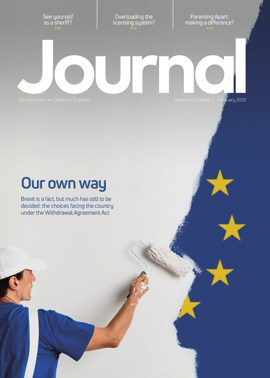Power of the humble email

It’s a jungle out there in the online world. Alongside the good stuff, a cacophony of competing nerds, narcissists and nincompoops assails you from every direction. For the simple lawyer trying to join in thoughtfully, it can feel pretty scary.
We are careful creatures by nature, afraid of making fools of ourselves or inadvertently causing offence. The most self-confident may quickly become the most timorous of beasties on this rocky terrain. What do we say? How do we say it? Where? What are the consequences if we cock it up? Is it true what former Prime Minister David Cameron said, that “too many tweets make a tw*t”?
I write this on the day Alistair Stewart, one of our most respected broadcasters, was dumped by ITV, his long career terminated after an injudicious Shakespearean quote. The quality of mercy was distinctly strained in his case. As a consequence, lawyers’ use of social media is patchy. There are some, Brian Inkster for example, for whom being fluent online is as natural as breathing. But he is notable not just for his abilities and understanding of the medium, but because there are so few like him.
Every law firm needs an attractive website, skilfully optimised to be at or near the top of the rankings, but again results are mixed. It’s a challenge to keep a site fresh and full of engaging content that draws people in, induces them to make contact and start down the road to becoming clients.
The best firms are accomplished at it, but in many, creating content is delegated to the trainees or neglected altogether. There is no excuse for this, especially when, if you really can’t do it yourself, there are skilled external providers who don’t cost the earth.
Websites, though, have one intractable problem: however dynamic and enticing a site may be, it can never feel personal to the viewer. It is a broadcast to the world that no visitor will ever feel has been designed just for them. For professional firms selling services based on trust and close relationships, this is a serious issue. But help is at hand. Amid all the whizz-bangery of online communication, there is a medium which does make that personal connection, is used daily by everyone, is infinitely flexible, is free, but is chronically overlooked. I refer to the humble email.
Medium with infinite reach
There are about 4 billion email accounts. There are still many businesses and individuals who do not use Twitter, Facebook or LinkedIn, but pretty much everyone has email. And they use it heavily. According to McKinsey, if we are employed by or run a business, we spend an average of two-and-a-half hours a day on email – 50 hours a month. In polling, depending on age group, between 65% and 78% of businesspeople choose email as their preferred method of communication. Between 0% and 4% prefer social media. Email’s reach and effectiveness as a marketing medium is well understood by all savvy businesses. Not all companies insist on having your address or phone number, but you can’t think of one which hasn’t made sure it has your email address.
So far, we have two reasons to use email for our marketing: its ubiquity and the ease of making it personal to the recipient. But they are by no means the only reasons. A key advantage of email is the ability it gives you to follow up. We are only too aware of this. How much time do you spend deleting emails from people you have never heard of, and never want to again, beginning, “Hi, hope you are doing great...”? We want rubbish dumped in our inbox like we want it on our bed.
But on the other hand, we gladly subscribe for material we find valuable, insightful and entertaining. Professional service providers usually need multiple contacts with a prospective client before they convert. Signing them up to receive high-quality, thoughtful content is a terrific way to build trust and credibility. There is room for long-form content, such as industry analyses or surveys, but generally, content is best when it is punchy and easily assimilated in bitesize chunks. It does not have to be original; what matters is that it resonates in your readers’ world, and gives them material they can take away and use.
Finally, email is scalable. As long as you can segment your database, so that the right content is sent to the right people, it is as easy to correspond meaningfully with five, 500, or 50,000. Better still, you can easily track what most interests them, and tailor your output accordingly.
In marketing, as with all human endeavour, originality will always be prized. Sometimes, though, it pays to think inside the box.






